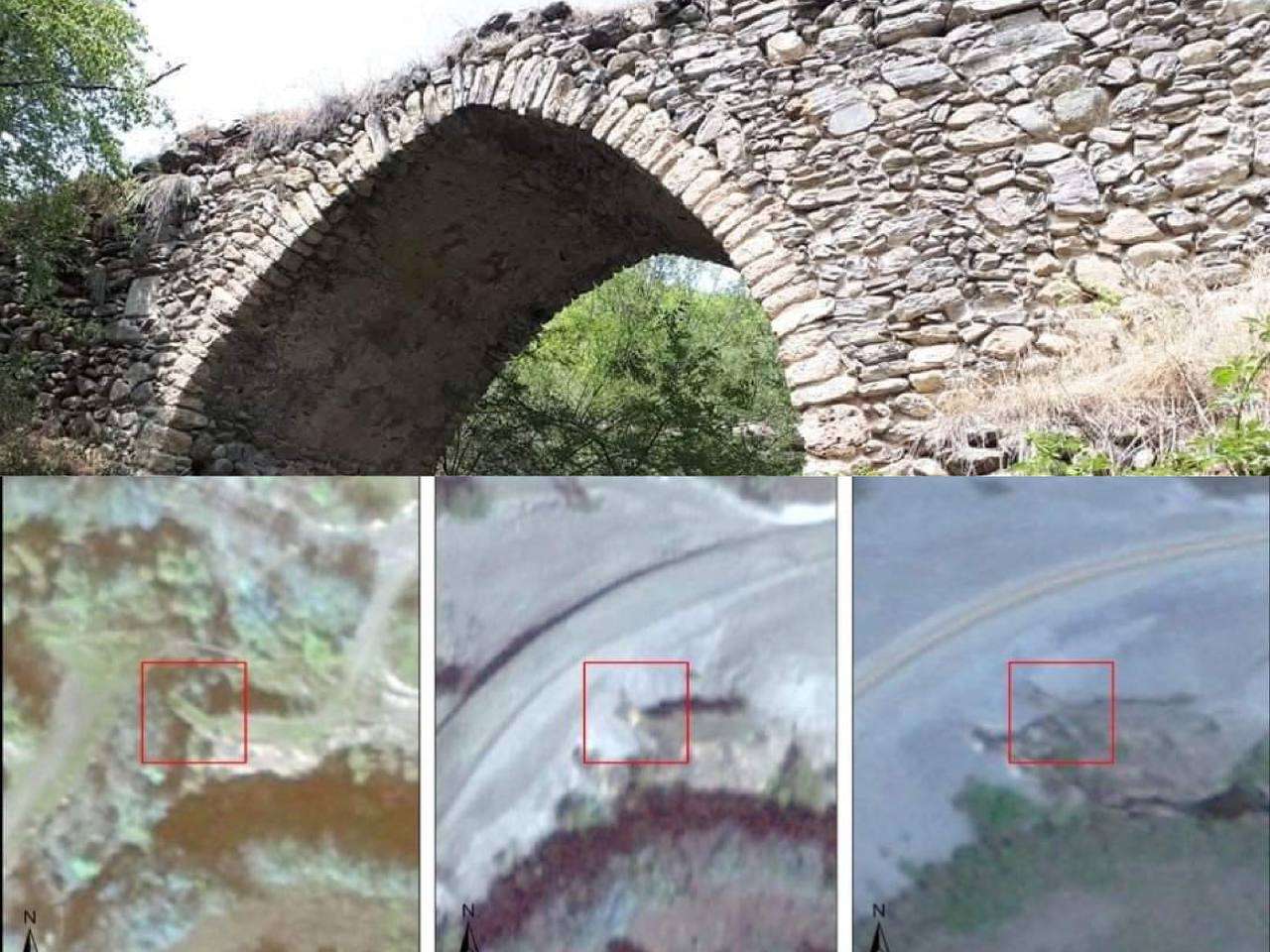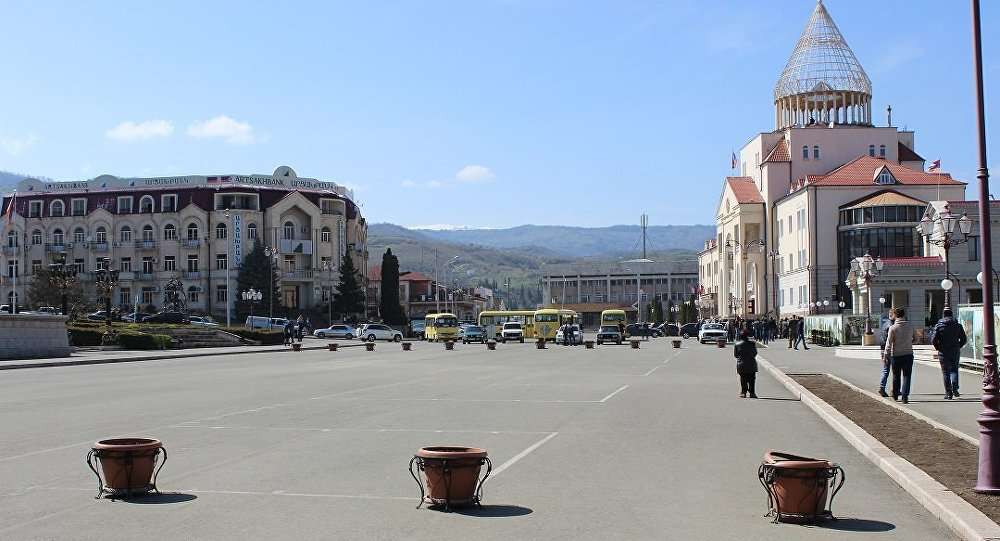The State Service for Protection of the Historical Environment of Artsakh informs. The website "Caucasus Heritage Watch" // https://caucasusheritage.cornell.edu/ published space photos https://m.facebook.com/CaucasusHW/posts/582071750740567?device_id=0a3f6868- 1f1b-4c1e-88a4-618a638d56fc&wtsid=rdr_08D6sFYUF1uce5ln8 where it can be seen that the Azerbaijanis destroyed the Halivor bridge.
Halivori or Halevori bridge is located 2km southwest of Mets Tagher village of Hadrut region on Ishkhanaget. According to the well-preserved 7-line construction protocol engraved on the stone on the upstream front of the bridge, it was built in 1835.
It is one of the six bridges built on Ishkhanaget and its tributaries, four continuously maintained and functioning.
Halivori Bridge is like the green belt of Iskhanaget. That zone connects the area of Mets Tagher across the river with the size of Tumi village. A single-arch, semi-cylindrical arched bridge connects the rocky ravines. It is 20 meters long, 3 meters wide, and 9 meters high. The width of the arch opening is 9 meters. The half-fake construction inscription is found in the note hidden on the wall of the north-western cell, where it is written: The bridge is in memory of Harutiun, son of Gevork, who built it in his parents' memory, and whoever passes by says, God has mercy on them, 1835."
So as you know, this bridge differs in its structure and location. Based on the terrain, the new bridge was built so that the foot of the bridge on the Mets Tagher side is about two meters lower than the foot on the opposite side. It is made of large and small fragments of quartz with a strong lime mortar.




















